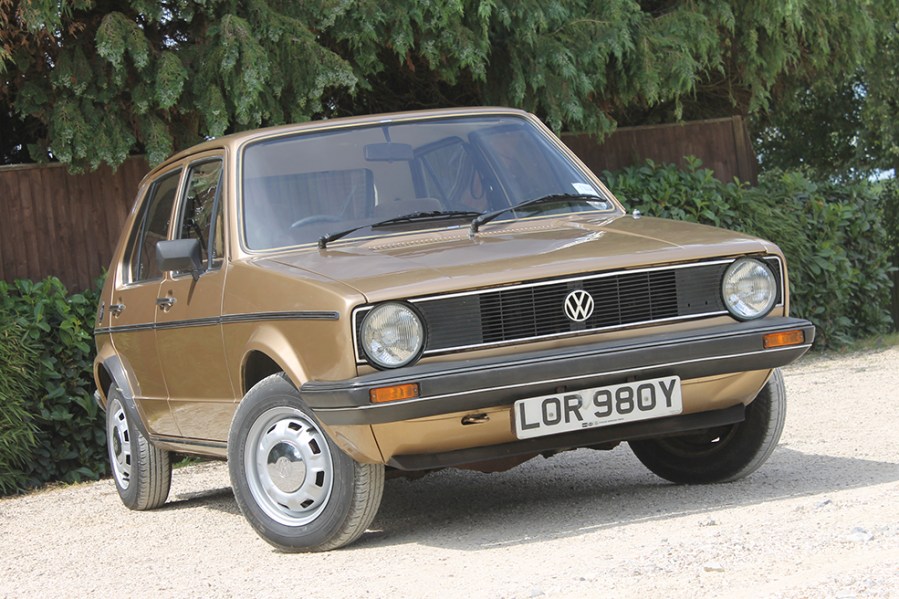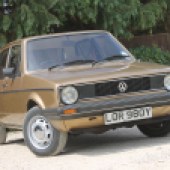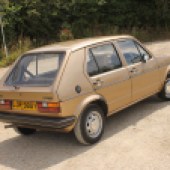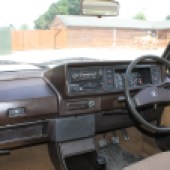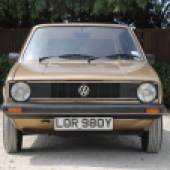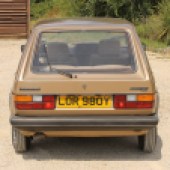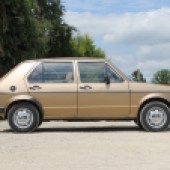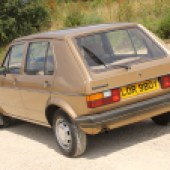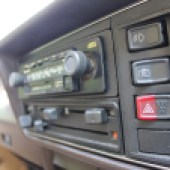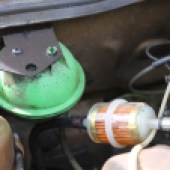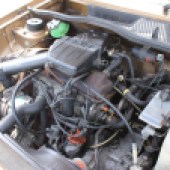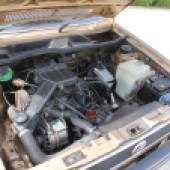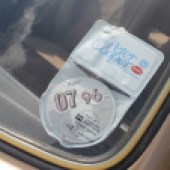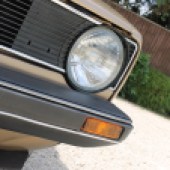Its reputation is dominated by the GTI models, but the original and ordinary Volkswagen Golf Mk1 was sharp, stylish, and sensible all at the same time
Words: Sam Skelton
During the 1950s and 1960s, Volkswagen was accelerating down a blind alley. Boss Heinrich Nordhoff had seen that the rear-engined models were selling steadily and discouraged any effort to vary the formula out of fear of upsetting the apple cart. But what worked in post war Germany didn’t work as the nation was regaining prosperity. People didn’t want rear-engined economy cars, and the attempts to expand the formula upwards met with mixed success. The Type 3 sold reasonably well but the 411 bombed.
After Nordhoff’s death in 1968, Volkswagen could shift focus. Kurt Lotz and later Rudolf Leiding saw that the future was with front engines and front wheel drive, and through the NSU-based K70 established that the market was there if Volkswagen wished to take it. From there, the Audi based Passat and Polo models managed to realign the company as one of Europe’s most forward thinking mainstream brands.
And it was needed; in 1971 the Deutschmark rose by 40 per cent against the dollar, effectively pricing the Beetle out of its best selling market at a stroke. The Ford Escort and Opel Kadett also snatched market share from Volkswagen – which dropped from 45% of the domestic market to just over twenty in barely twelve years. And in 1972 a German think tank assassinated the Beetle’s safety reputation as thoroughly as Ralph Nader had for the Chevrolet Corvair. Something desperately had to be done if Volkswagen wasn’t to sink under a tide of misfortune.
But far from failure; it was with the Golf that Volkswagen scored its biggest hit. A handsome hatchback in a world of staid saloons, the Golf appealed to those who needed practicality and those who wanted to be different. In Britain, it was a definite cut above the Escorts and Kadetts/Chevettes with which it competed on its home turf – it was no accident that Surbiton socialite Margo Leadbetter had a mid-green five door in The Good Life.
And for those scared by the hatchback, there was even a four door alternative; named the Jetta, the Golf with a boot was intended to reassure continental customers unnerved by the workmanlike tailgate of the Golf. People used to the Escort and Kadett saloons thought that the Golf was perhaps a little downmarket, given the added practicality of its folding seats and hatchback, and while Jettas are rare today they offer a good value entry point into the Golf family.
Replaced in Britain in 1984 by the Golf Mk2, Volkwagen’s first Golf is now a card-carrying classic with everyday usability. The later cars may have sought to modernise the formula but they gained weight, losing the lightness and the sharpness that made the original Golf such a great car.
Engine and transmission
There’s a range of petrols from 1.1-1.6, all carburetted – we’re not going to focus too much on the GTI models here, which had 1.6 engines with Bosch K-Jetronic injection (a 1.8-litre engine appeared in the GTI at the very end of production). There were also 1.5- and 1.6-litre diesels, the latter found with a turbo in the last year of Mk1 sales, but these are rare, and we’d be wasting space if we discussed them here.
Check for blue smoke, which will be the result of worn valve stem seals. Not a hard job, but a handy negotiating tool. It’s not likely to be worn piston rings or bores unless the engine has covered moon mission mileage, so there should be little cause for concern. The official cambelt interval is four years or 40,000 miles, so check it’s been done. If not, make it a priority as these engines are interference engines and a snapped belt could write off the engine.
If a 1.1 or 1.3 has trouble idling, it may need a carburettor rebuild but equally it may simply be that the rubber flange between the carb and the inlet manifold has split. If there’s no sign of regular fluid changes, add this to the urgent list – fresh oil and coolant should be used every year. Golfs are easy DIY maintenance cars – so don’t worry if there are no bills but ask to see receipts for parts if possible.
Most Mk1 Golfs are manual – four speeds to 1979, then five speeds for 1.5- and 1.6-litre models including the turbodiesel. A three-speed automatic was offered but was a slow seller. These gearboxes are broadly shared with those in lower specification Austin Maestros, and drivers of those cars will be familiar with them. Synchromesh can fail on high mileage examples, typically starting with a crunch entering second. Linkages can also wear, leading to sloppy changes.

Bodywork
Check everything. Inner and outer sills, floor pans, arches, spare wheel wells, boot floors, front panels, bulkheads and wings can rot, and a leaky sunroof can mean that the roof isn’t impervious to rust either. Fuel filler necks also corrode, dropping rust into the fuel tank. It’s vital to ensure that above all, you buy a bodily good car, as this is where bills can bite hardest.
Chrome and powder coated bumpers are available, as are the bright trims – but plastic bumpers are hard to find without scrapes, and these should be used as negotiating tactics if the plastic bumpers on your potential purchase are anything but perfect. Early cars have metal door handles, while later ones use plastic – the former are desirable upgrades, so the second-hand market is pricey.
Steering, suspension and brakes
Volkswagen Golf Mk1 brakes are okay by 1980s standards – discs on the front and drums on the rear – though the connection rod between the right-hand drive brake pedal and the master cylinder on the left-hand side can make UK brakes feel a little less sharp than they really are. This won’t be a problem on left-hand drive cars as it’s a result of the solution VW engineered for right-hand drive pedals.
The steering should feel responsive, though very few cars will have power assistance. If it feels sloppy, check the steering rack bushes. Volkwagen didn’t strengthen the rack mounts on right hand drive cars, and they have been known to corrode. Check carefully!
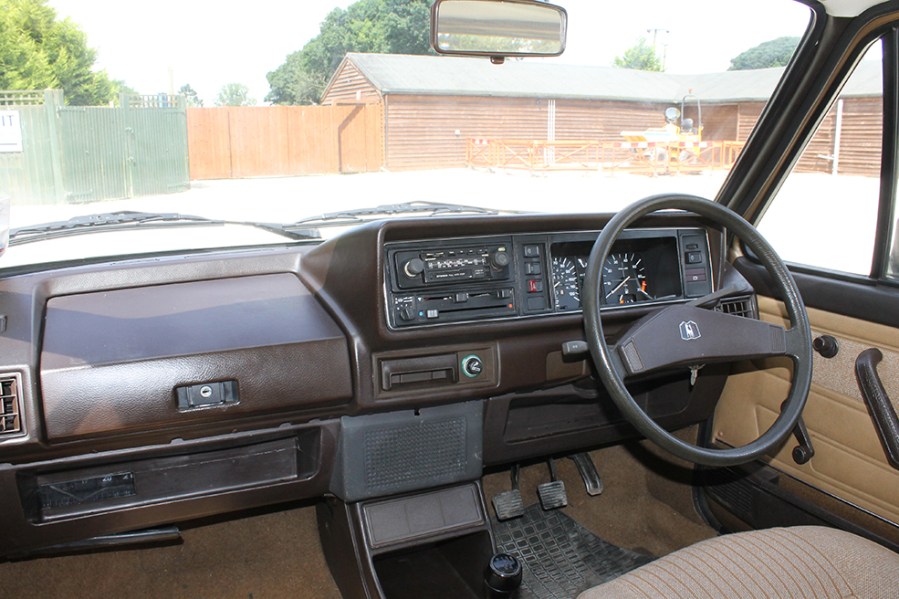
Interior
Not everything is still available, but easily worn trim such as carpets and sun visors can still be had from VW Heritage. The same even goes for seat coverings and door cards, meaning that it should be easy to keep your Golf in fine fettle courtesy of the parts available.
There should also be a good supply of secondhand parts available through other enthusiasts should you prefer the aged look for your classic; consider joining a dedicated club and/or Facebook group to ensure easy access.
Volkswagen Golf Mk1: our verdict
Non-GTI versions of the Volkswagen Golf Mk1 are still attainable and make for a great no-frills classic that’s likely to appreciate in value as time goes on. If you’re canny, just £2000 should be enough to secure something up to everyday use that you needn’t worry about leaving at the supermarket, while restoration projects can cost from just a few hundred quid.
Our advice would be to buy on condition rather than spec, and to remember that you’ll find better value with five door models that with the easily race-prepped three doors. But the best bargains will be found with Jetta badges.

